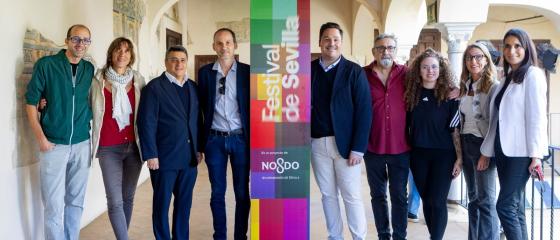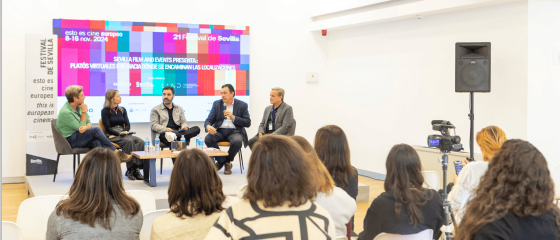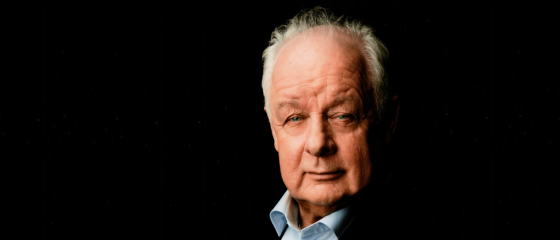The directors of Small Body, Laura Samani, and Anatomía, Ola Jankowska have presented their first fiction feature films in the sections Extraordinary Stories and Endless Revolutions
Seville, 8th November. – The third day of ‘A Coffee with…’ has had the directors of Small Body, Laura Samani, and Anatomía, Ola Jankowska as protagonists. The axis of union of these two films are female characters who seek, in some way, redemption through catharsis. The first is a mysterious feminist fable that premiered at the Cannes Critics' Week and is now being screened in the Extraordinary Stories section. The second one is a collage that portrays a woman's encounter with her ghosts from the past. The film debuted at the last edition of the Venice International Film Festival and now Sevillian audiences will be able to see it in the Endless Revolutions section, as part of the 18th edition of the Seville Festival.
A redemption journey through the mountains
Laura Samani, director of Small Body takes a 16th century legend as the starting point, which places us on the border with Slovenia and Austria. According to this story, if a child died without being baptised, he or she could revive long enough to be baptised and not spend eternity in limbo. Agata, the main character of Small Body, is aware of the legend, and does not hesitate to set out on a journey through the mountains to find that place where she can find peace after the death of her baby.
The filmmaker pointed out in the talk that the idea of travelling a long journey helped her to explore loss and mourning in depth. ‘It is a story about faith, but related to hope,’ she explained.
To achieve her purpose, the cinematography director Mitja Ličen decided to follow the protagonist with a camera on her shoulder, so that the viewer could travel with the characters. On the other hand, the shooting of the film took place in spring, and had to be interrupted several times due to the pandemic, but could be resumed in similar weather conditions. ‘We were very lucky because we stopped several times, but when it was time to shoot, we didn't have snow,’ she recalls.
The language also plays a very important role in the film. The Italian director has explained that in the feature film various languages are spoken. ‘There are three Italian dialects: Venetian, which comes from the lake side; Friulian, which is a language that has its own grammar; and Karst, which is a variation that is practised in the mountains, and also some Slovenian.’ Samani has pointed out that in the Italian mountain area close to Slovenia, the locals speak their own language. ‘They normally have to translate into our language what they think,’ has stated.
A collage of non-solved emotions
Anatomía, by the Polish director Ola Jankowska also reflects on loss. In the film, ‘the main character goes to a place where she can mourn,’ the filmmaker explained. She added: ‘It is a film about the end of something but not about mourning, it explores the philosophical fact of what it means for things to end and how we can project the idea that something is there but then it is not. That there is love and then there is not.’ In this case, the filmmaker says that the focus is not so much on the story as on the emotions.
The protagonist, Mika, returns to Poland to visit her father, whom she has not seen for 20 years. This experience is a carousel of memories that forces her to face a past she thought she had forgotten. ‘I wanted the film not to be an intellectual process but an structured one. We shot over a couple of years in different locations, which was a time of major change, and this film reflects that.’ I didn't have to direct the main character, Karolina Kominek, much on the set. She was there and understood everything every day. In the end I didn't have to say anything to her," the director recalled. According to the filmmaker, this complicity between director and actress is because they are almost neighbours.
‘We spent a lot of time together dancing and listening to music. It was a very physical process. I wanted her to be in that feeling without showing anything, to be something documentary,’ says the director.
What's more, to get her into the role, she asked her mother to go to the shoot: ‘Her presence changed how she behaved in the scene and the fact that she came from outside the world of film was something very profound," she says.







